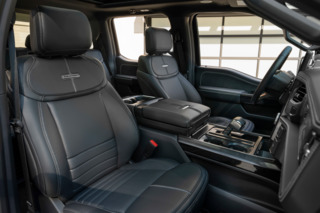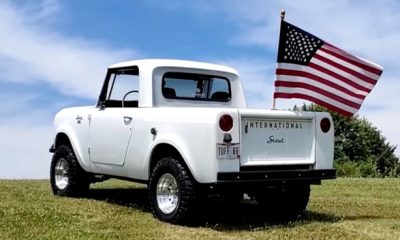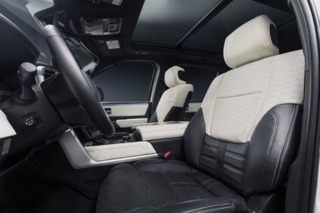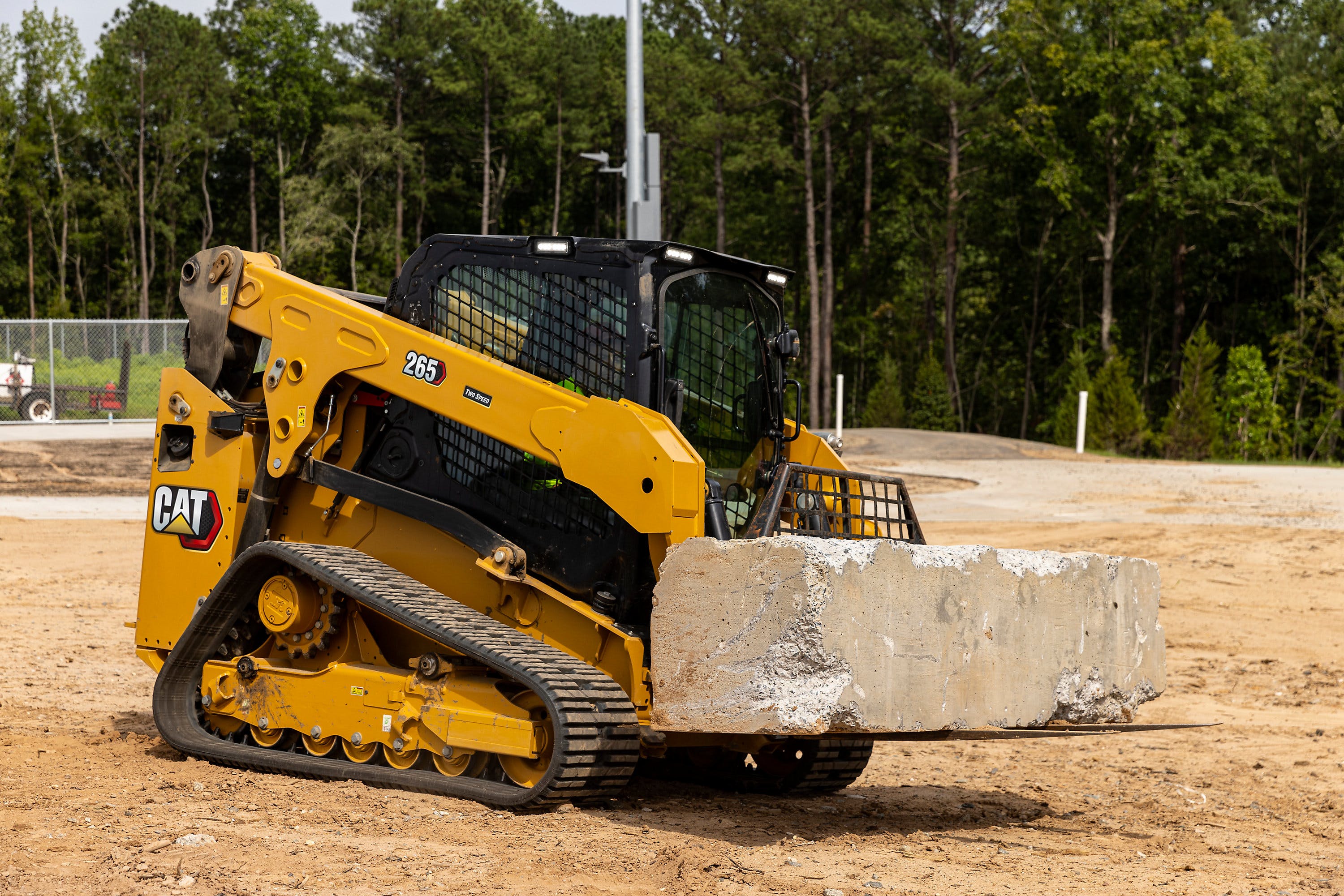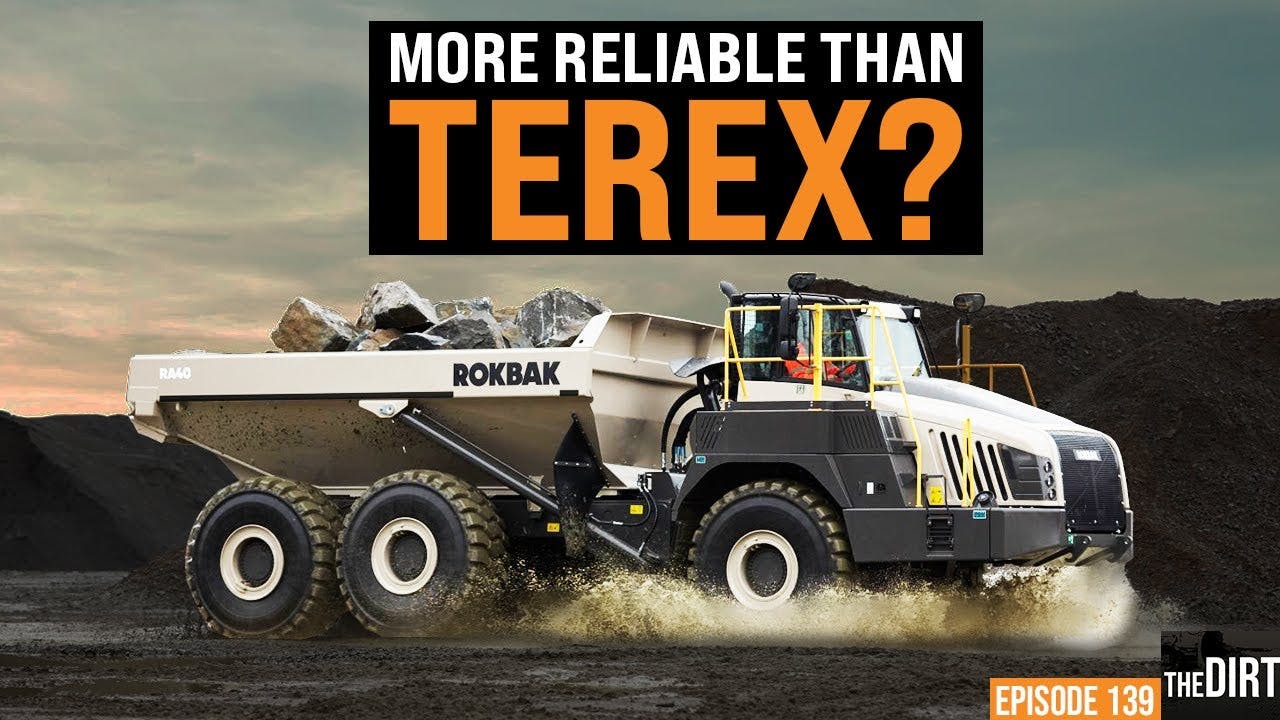Fine wine isn’t the first thing that comes to mind when you think about Ford trucks. Just don’t ever say that in front of the winegrowers of Sonoma County, California who run their operations with fleets of F-150s, transit vans and super duties.
For the winegrowers and many other commercial business customers, their vehicles are among the most valuable tools. For the automakers, their role no longer stops with the vehicle itself.
“The right tool today and tomorrow is no longer just about the vehicle. It’s about a digitally powered ecosystem to accelerate productivity across any job,” said Darren Palmer, Ford general manager of battery electric vehicles.
Under the backdrop of California’s wine country, Ford recently rolled out its plan for commercial customers.
“Right now, businesses large and small are facing some really critical decisions about the future and it’s not just a decision about the vehicles they use,” Ford CEO Jim Farley said. “More importantly, it’s about how they manage their fleets.”
Most commercial customers are aware that electric vehicles are better for the bottom line and for the planet. That doesn’t make the transition easy.
Strictly from a vehicle standpoint, many automakers will sell watered-down versions of their retail offerings and leave the commercial businesses to sort out the different service options, financing, software and telematics portions of the business.
According to Farley, Ford has listened to its commercial customer base, which was seeking a partner to improve productivity and simplify the processes for them.
“I’m really excited about the electrification of our products, but I’m actually more excited about this data, software, physical services and integrated business,” he said. “That to me is the future of our industry, and it’s going to start at Ford with Ford Pro.”
Ford Pro is a global business and brand within Ford dedicated to commercial and government customers of all sizes and industries to deliver a one-stop shop experience regardless of fleet size or powertrain.
“The biggest pain point we hear from commercial customers when it comes to managing their fleets is not having a single place to access all of their information across vehicles and services,” said Ted Cannis, Ford Pro CEO. “We’ve created a platform that centralizes and powers our entire digital ecosystem, working across gas and electric powertrains, Ford and non- Ford vehicles.”
To demonstrate how Ford’s electric vehicles and web-based fleet management tools can have a positive impact in terms of increasing productivity, improving sustainability and lowering the total cost of fleet ownership, Ford Pro is collaborating in a pilot program that will supply three Sonoma County farms in California with the full suite of Ford Pro solutions, including F-150 Lightning Pro pickups and E-Transit cargo vans to help drive their business forward.
The pilot program is launching with Bevill Vineyard Management and Vino Farms in Healdsburg, and Dutton Ranch in Sebastopol – which collectively represent about 4,000 acres in the vineyard-rich Russian River Valley.
Pilot farmers also will have access to Ford Pro Intelligence software, Ford Pro Telematics Essentials and Ford ProE-Telematics and energy management – all to help reduce operating costs and more efficiently manage gas- and electric-powered vehicle fleets.
“These farms will be a living lab for Ford Pro, while we work hand in hand to learn from the data that’s collected,” said Wanda Young, Ford Pro global chief marketing officer.
Customized solutions for each of the three farms were set up based on use cases to lower the operating costs until they make the full transition to electric.
“Ford Pro and the Sonoma County Winegrowers are driven by many of the same tenets – to accelerate productivity while operating responsibly,” Young said.
 Ford Pro electric vehicles, coupled with the solar power that many Sonoma County ranches already generate and store, represent an important way to help offset rising fuel costsFord ProA sustainable future
Ford Pro electric vehicles, coupled with the solar power that many Sonoma County ranches already generate and store, represent an important way to help offset rising fuel costsFord ProA sustainable future
Karissa Kruse, Sonoma County Winegrowers president and internationally renowned sustainability champion, said she believes electric vehicle adoption and efficient fleet management are the next steps in sustainability.
Nearly a decade ago the Sonoma County Winegrowers made a public commitment to sustainability.
“Our farmers are really implementing best practices and continuously improving every year,” she said. “Lately we’ve been really feeling the impacts of climate. One of our pilot farmers loves to say if you’re going to dance with Mother Nature, she always leads. Lately it’s been Mother Nature stomping on our feet.”
Dedicated stewards of the land, the farmers remained at odds with how to continue advancing their sustainability efforts.
“Our farmers, not only do they love their trucks, but they rely on them for everything,” Kruse said.
Frankly, greenhouse gas emissions were not the side of the sustainability equation the farmers were focused on.
“I’m almost embarrassed to say now because you’re looking at this amazing software solution and it’s like, of course, we should be doing fleet management,” Kruse said. “As farmers, we think about plants in the ground, weather in the sky and what’s going on in our growing season and who of our partners we are selling grapes to.”
It was the unveiling of the Ford F-150 Lightning that opened the door to a whole new world.
Via a Zoom conference call in 2021, Ford Pro representatives demonstrated the capabilities of its telematics tools.
“That was the aha moment where I said, it doesn’t matter if you’re part of this program and not part of this program, whether you can afford an electric truck or van today or not for five years, you can actually make it a huge difference in your greenhouse gas emissions with your fleet management, cost savings, all in one today with that simple tool,” Kruse said.
“This collaboration with the Ford Pro team is a great natural next step to help us continue our progress in sustainable agriculture,” she said. “A lot of farming families have a rich history with Ford, and with history comes trust. So as many of our farmers look for ways to lead in innovation and be a part of the solution, that trust is critical when it comes to investing in electric vehicles and in solutions to manage farming fleets. Our farmers love this pilot program; it’s going to be foundational.”
 Pilot farms outfitted with Ford Pro charging stations complement the solar power that has helped Sonoma earn a distinction as the most sustainable county in the country.Ford ProVehicles among farmers’ most valuable tools
Pilot farms outfitted with Ford Pro charging stations complement the solar power that has helped Sonoma earn a distinction as the most sustainable county in the country.Ford ProVehicles among farmers’ most valuable tools
To start off the program, the three farms will use one E-Transit cargo van. Such vehicles are currently used to transport laborers and gear from site to site.
“The idea was that probably no farmer is going to overhaul their entire fleet in one year,” said Kruse. Working with Ford Pro the decision was made to roll out the concept in a practical way, using the software on current vehicles and incorporating use of electric vehicles over time.
“That way, you can really manage what is the ROI on an electric vehicle versus really doing your best to be efficient through using the software on your current vehicles,” she said.
Kruse says the farm owners are excited about the F-150 Lightning Pro pickups and E-Transit vans.
Either vehicle opens the door to having the power available rather than return to the shop to get a generator to power a tool to cut down a vine or light up the field during an evening harvest.
“We haven’t even had those conversations yet, because we’re just starting to understand how it can be used,” Kruse said.
Bevill Vineyard Management owner Duff Bevill says he intends to drive a Lightning Pro for a couple months just out of curiosity. He admits he is not the “workhorse example” in the company and would likely hand it off to another employee who is going to tow things and put 25,000 miles a year on it.
“I think that would be the valuable data that Ford’s going to gather from monitoring our operations,” Bevill said.
As with most commercial operations, each farm has a business model to plan and budget annually for vehicle replacements.
“Based on what we all learn on this, if the truck is as reliable as what we’ve expected in the past, that’s all good,” Bevill said. In his case, two or three new vehicles are acquired per year as older ones are phased out of service. Over time, that could result in all three of those replacements being electric vehicles.
After one farm starts more regularly purchasing electric vehicles, the word-of-mouth is expected to spread interest in both the Lightning Pro and E-Transit vehicles as well as use of Ford Pro’s software package across the Sonoma County region and the United States in general.
 Fleet management changes the game
Fleet management changes the game
In addition to the vehicles, the farmers can consult with the Ford Pro team for the duration of the program.
While the vehicles hold significant importance to commercial business owners, it is the benefits of the Ford Pro fleet management that may be the game changer.
“I think we’re going to see the real learning and value come from just understanding the fleet management piece,” Kruse said. “It sounds simple, but … it’s not something we’ve spent, frankly, a lot of time really working with our farmers on. And not something I think they spent a lot of time really thinking about, other than I have this many trucks, they need servicing, they’re driving this many miles. But to actually understand where they’re at, how they’re being driven, the speed, the idling, the gas, use all of those things to make it more efficient; that we’re going to build to be a really inexpensive way for farmers to get immediate benefit.”
Simply put, she said the farmers are data nerds.
“They rely heavily on information,” Kruse said. “They love the data to help them run their business. They also are trying to make every penny count, now more than ever. The first time they saw this demonstration they knew they wanted it because it was going to help them lower their costs and get their trucks on the road as much as possible.”
She said the Sonoma County Winegrowers viewed it as a win-win for the businesses and the planet, taking into consideration the rising cost of supplies and fees.
Ford Pro Intelligence gives business owners access to important data on every vehicle – whether gas-powered or electric. The web-based service offers always-on access to vehicle health reports and other data designed to help limit vehicle downtime while lowering operating costs. “Just as an F-150 Lightning or E-Transit is an essential asset for a small business owner, so too is Ford Pro Intelligence,” Young said. “We believe that the telematics data will change the way commercial businesses manage their fleets and operations.”
The technology connects wirelessly – helping businesses manage fleets with real-time vehicle insights. Information includes maintenance schedules, charge event monitoring, vehicle tracking, state of charge, range, charge history and logs, charging/battery settings and alerts, and departure preconditioning to help maximize range and save battery life.
Naturally, operating these vehicles – and maintaining them is one of an organization’s largest expenses. At Dutton Ranch, which runs a fleet of about 70 work vehicles, fuel costs average about $5,000 per month. The prospect of reducing that monthly expense is critical to operations moving forward. Electric vehicles, coupled with the solar power that many Sonoma County ranches already generate and store, represent an important way to help offset rising fuel costs.
“Once we start getting our data, I can’t wait to geek out on it,” quipped Marissa Ledbetter, owner of Foster Vino Farms.

 Business5 years ago
Business5 years ago
 Business3 years ago
Business3 years ago
 Tech3 years ago
Tech3 years ago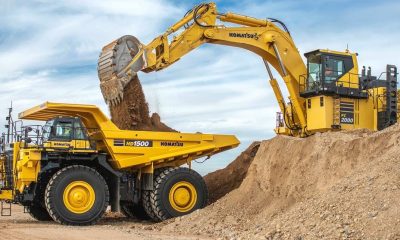
 Tech2 years ago
Tech2 years ago








